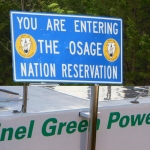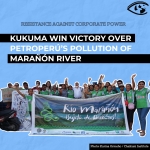Shell Games: Divide and Conquer in Norco's Diamond Community
The Case for Fair and Just Relocation
Download Full Report
 | Shell Games: Divide and Conquer in Norco's Diamond Community Report File Size: 607KB |
Diamond is a neighborhood of four streets in the town of Norco, Louisiana, 40 miles up the Mississippi River from New Orleans. Diamond is in the heart of the region's infamous ''Cancer Alley.'' Many of the people in Diamond have lived on or near this land all their lives, and though the neighborhood is called New Diamond Subdivision, it is, in fact, a neighborhood with a long and rich history. The land on which it now sits was once Trepagnier Plantation, then Diamond Plantation. Many of the people who live there today are descendants of the slaves, sharecroppers, and farmers who once worked the land. The people of Diamond can tell you where they were born, where their parents were born, and where their grandparents used to live in days gone by. Belltown, the Big Store, the Big Yard - these are the cherished names of places that are now occupied by the Shell Chemical facility. Sadly, since Shell entered the community in the 1950's, many of the places rich in the history of this African American community have been bought by the corporation for its expanding industrial needs.
Outside of the Shell fenceline, members of the Diamond community believe that Shell has created an unofficial buffer zone that has turned many homes and memories into vacant lots, giving the neighborhood the appearance of a ghost town in the making. Members of the community believe that the Shell Chemical plant and the oil refinery, with their large volumes of toxic pollution, fires, explosions, flaring and chemical spills, have dramatically reduced their property values. Shell's purchase program is ''voluntary,'' but does a person living next to a chemical company have a choice?
The purpose of this report is to expose Shell's unfair property purchase tactics in Diamond. This report also serves to honor the history of Diamond. The community is more than just property to be seen through the view of dollar signs. It is rich, historical land and a sacred home to a community. Shell's property purchase tactics seem to indicate a respect for profit instead of for the neighbors and their community.
Over the last 25 years, Shell has been buying property in the neighborhood. Today, the company owns 18% of the lots that comprise the four streets of Diamond. Neighbors will tell you that some people have fled the neighborhood without selling because they could no longer stand the pollution. When the abandoned homes and vacant lots are factored in, the percentage of affected property jumps to 30% of the lots. Over one quarter of the neighborhood is like a Toxic Ghost Town.
When asked about relocation, the company managers will smile and say they are happy to buy out anyone at fair market value. How much is fair market value with a chemical company next door? Many residents believe that Shell has refused to buy property at a price that will allow people to resettle elsewhere without going into debt. Race and class are issues in this struggle. Diamond is an African American neighborhood. Some of the residents are middle class; still others are senior citizens struggling to survive on social security. How would Shell conduct negotiations with rich and powerful white neighbors?
Members of the Diamond community believe that the spate of health problems is caused by the chemicals from the plant. They know that the generations that lived on the land before the plant did not experience the health problems
of today. Samples taken by the community's Bucket Brigade - the air sampling tool - have proven that hazardous chemicals are almost constantly in the air. A criminal investigation by the EPA and a damning account of the company's environmental practices by a whistleblower confirm the community's fears (Times Picayune, June 3, 6, 10, 2000; August 13, 2000).
Imagine how bad the problems must be if the residents of Diamond Plantation are willing to sell at low prices and leave the land of their history. The Shell Corporation has a ''rich'' history, too. In the second quarter of 2000 the corporation set records for profitability - over three billion dollars.
(Shell PR, March 8, 2000, Royal Dutch/Shell Turns in Record Results). How much would it really cost this huge corporation to listen to the people of Diamond, to buy four small streets of homes at a fair price so they could relocate to a cleaner environment?
Shell's ''New'' Offer: The Effect on the Families of Diamond
The Shell Corporation has recently put forth a ''new'' purchase offer to the community. This program, called the ''Norco Voluntary Fenceline Property Purchase Program,'' continues to exclude half of the community -- Diamond and East Streets. Shell's proposal appears to show how little the corporation understands its neighbors. Many families have close relatives that live on all four streets. The Hollins family is a good example. Mary Hollins lives on Cathy Street. Her elderly Mother lives on Diamond. Mrs. Hollins is the principle caretaker for her Mother. If Mrs. Hollins were to follow Shell's plan, she would leave the neighborhood and abandon her Mother. Does Shell really expect that Mrs. Hollins and others in similar situations will sell out their families?
The ''new'' program was described in a letter sent to only half of the community members in Diamond. The offer continues to base the price on market value in Diamond. The corporation does say, however, that a premium will also be paid. This premium must be enough to enable Diamond residents to relocate without incurring debt.
Shell's ''new'' program has come about after relentless agitation by the residents of Diamond. However, the timing appears suspicious to members of the community since it was announced just after the beginning of an EPA criminal investigation and a whistleblower's tell all story. Is Shell using Diamond in a public relations ploy or to make peace with federal regulators?
The residents of Diamond have good reason to be skeptical about this ''new'' offer. The corporation's description of the ''new'' program notes that it is ''an enhancement of the property purchase program that has been in place for thirty years.'' If the ''new'' program does not enable people to buy a comparable home elsewhere and compensate them for the reduced market value of their homes, then the ''new'' program will only be a continuation of Shell's old purchasing tactics.
The map on the next two pages is a map of the four streets that make up the Diamond neighborhood. Those streets are Washington, Cathy, Diamond, and East.
- 107 Energy



